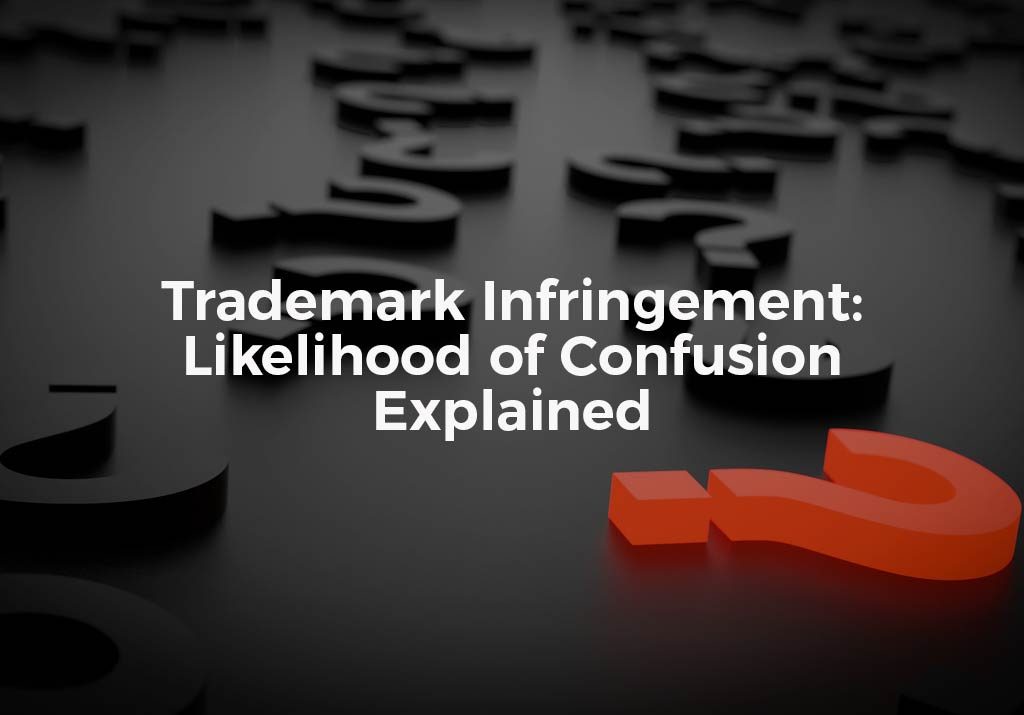When someone is using a trademark that is confusingly similar to a trademark that is already in use, it may constitute trademark infringement. The courts must analyze trademark infringement cases based on the use of a confusingly similar trademark by applying a set of legal guidelines known as “the likelihood of confusion” factors to the facts of the case. The analysis involves comparing the plaintiff’s trademark to the infringing trademark and looking for similarities. The court will consider several factors, which are discussed below, but not every factor is applicable in every given trademark case. The factors include:
- Similarity of the appearance of the trademark. The court will consider how similar the visual impressions of the two trademarks are. For instance, if the two trademarks are stylized in a similar manner and the only difference between them is a swapped letter, the marks are likely to be considered confusingly similar – e.g., TRINTSY vs. TRINSTY. When the two trademarks in question are design marks, the likelihood of confusion analysis is focused mostly on the visual appearance of the two marks and how similar they are to one another.
- Similarity of the sound of the trademark. If the two trademarks are read out loud, do they sound the same? For example, if the only difference between the two marks is the substitution of a letter that has a similar sound, such as a “C” for a “K”, the two marks likely sound confusingly similar to one another.
- Similarity in meaning of the trademarks. If the two trademarks are different, but have similar connotation or meaning, it puts consumers at risk of confusing the two marks. For example, PLEDGE and PROMISE are different word marks, but their meaning is very similar. If these two marks are used on products that belong in the same commercial space, there is a substantial likelihood that consumers will be confused.
- Whether the two trademarks are used in the same commercial space. When the two trademarks are used in the same commercial space, consumers are more likely to confuse the two trademarks. However, similar marks can be used in different commercial spaces without risk of consumer confusion. For example, Domino is a trademark for a brand of sugar, and Domino’s is a trademark used for a pizza delivery service. While the two trademarks are similar words, they exist in different commercial spaces.
- The strength of each trademark. Trademarks can vary in their level of distinctiveness. There are six categories of trademark strength: generic, merely descriptive, merely descriptive but with acquired secondary meaning, suggestive, arbitrary and fanciful. Marks that are deemed generic or merely descriptive are usually considered weak and are not distinctive and are not afforded trademark protection status. Fanciful, arbitrary, suggestive and merely descriptive marks that have acquired secondary meaning are protected, with arbitrary and fanciful marks being the strongest, as these marks are very distinctive. By way of example, the suggestive mark KLEENERY for a cleaning service is a suggestive mark. If an infringer used the mark CLEANERY for similar services, the court would most likely find that the CLEANERY mark is a merely descriptive mark (i.e., a weaker mark than KLEENERY).
- Whether the plaintiff is likely to bridge the gap in commercial space. If the plaintiff is operating in one commercial space and the infringer is operating in a different commercial space, the court will look at whether there is a high likelihood that the plaintiff will move into the infringer’s commercial space. If this is the case, consumers are at risk of being confused by the similarity of the trademarks.
- Whether there is evidence that consumers have actually already been confused. Evidence that supports the allegation that the infringing trademark has already caused consumer confusion is significant to the likelihood of confusion analysis.
- Who is the consumer. The court will evaluate the potential consumer of the product. Less sophisticated consumers are more likely to be confused by confusingly similar trademarks.
- Whether the infringer has deceptive intent. The court will consider whether the infringer’s adoption of a substantially similar trademark appear to be for the purpose of deceiving consumers. The infringer’s intent matters.
If You Are Worried About a Confusingly Similar Trademark, Call Us
At The Rapacke Law Group we want to help you with your trademark matters. Contact us today to schedule a free initial consultation with one of our IP attorneys.




